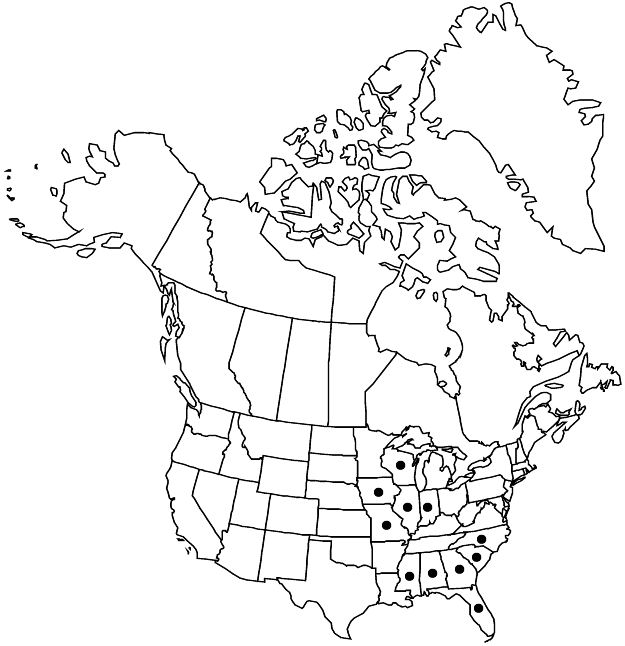Difference between revisions of "Callirhoë triangulata"
Mem. Amer. Acad. Arts, n. s. 4: 16. 1849.
FNA>Volume Importer |
FNA>Volume Importer |
(No difference)
| |
Revision as of 20:15, 24 September 2019
Plants perennial. Stems 1–11(–35), decumbent, ascending, or weakly erect, 4.5–5 dm, densely hairy, hairs stellate, 4(–6)-rayed. Leaves: stipules persistent, ovate to lanceolate, 3.7–7.2 mm; petiole 0.5–29(–34.5) cm; blade triangular or ovate-lanceolate, unlobed or shallowly 3- or 5-lobed, (3–)6–15(–20) × 3.3–10.5(–14) cm, surfaces stellate-hairy. Inflorescences paniculate; involucellar bractlets 3, spatulate or obovate, 3–8 × 1.5–3 mm. Flowers bisexual; calyx lobes valvate in bud, forming apiculate or acuminate point; petals red (each with white basal spot), 1.6–3.2(–3.5) cm. Schizocarps 6–7 mm diam.; mericarps 10–13, 2–4 × 2–3 mm, hairy, hairs simple and 2-rayed, dehiscent; beaks not prominent, to 0.5 mm or absent; collars absent. 2n = 30.
Phenology: Flowering spring–summer.
Habitat: Sand prairies, sand hills, sandy alluvium near streams
Elevation: 100–300 m
Distribution

Ala., Fla., Ga., Ill., Ind., Iowa, Miss., Mo., N.C., S.C., Wis.
Discussion
Callirhoë triangulata is found in the upper Mississippi River drainage, especially along the Illinois, Kankakee, Mississippi, Wabash, and Wisconsin rivers. It is also scattered and uncommon in the Gulf and Atlantic coastal plains.
Selected References
None.